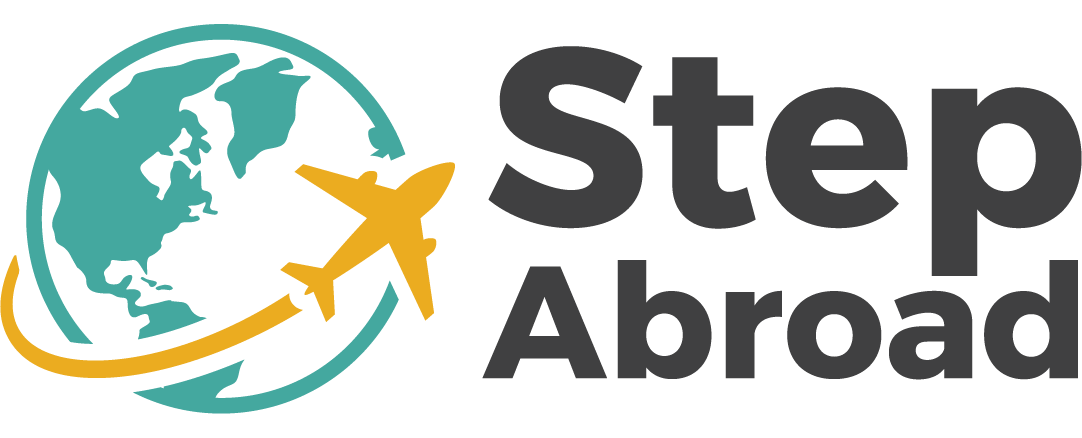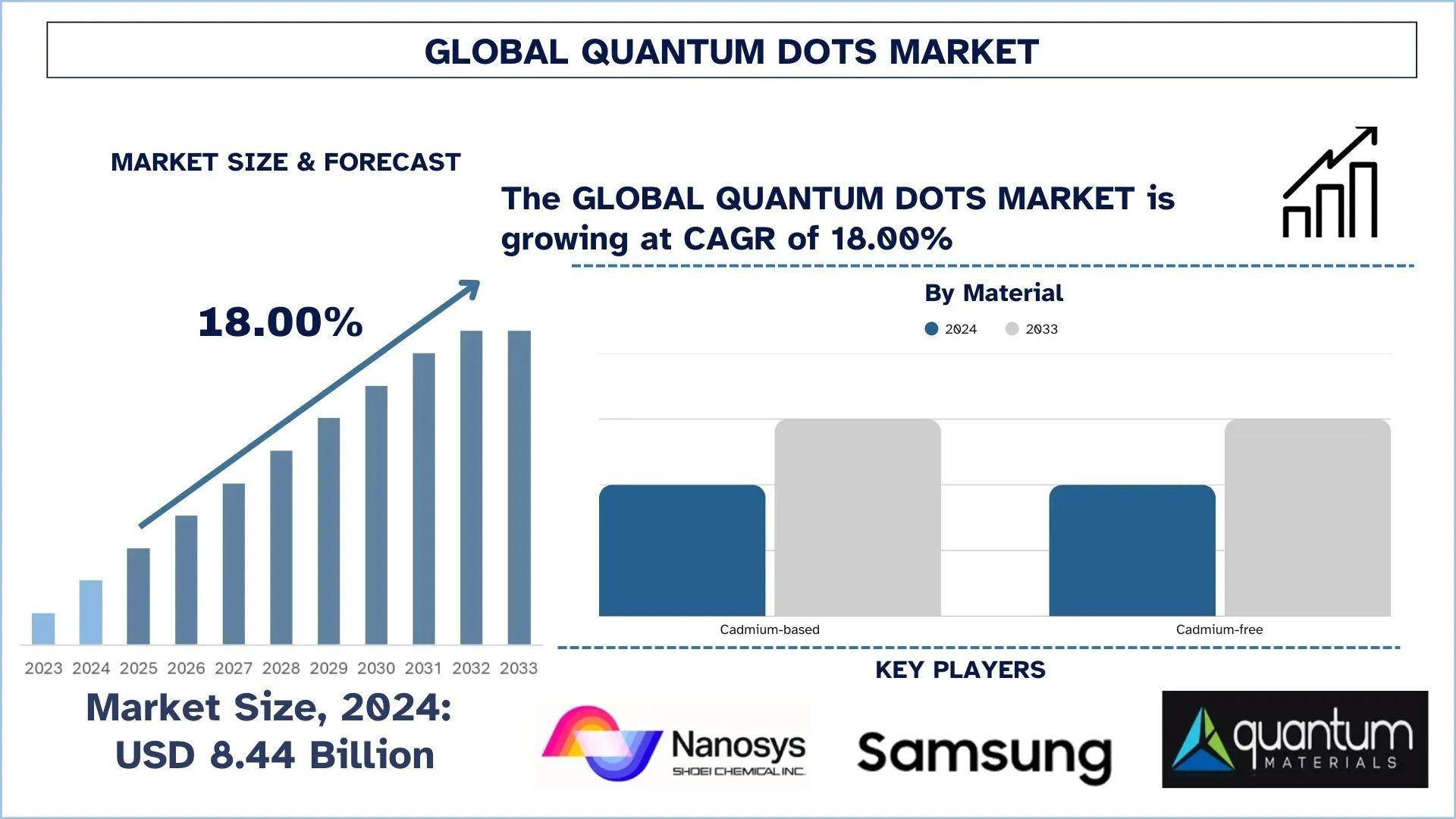According to a new report by UnivDatos, The Quantum Dots Market is expected to reach USD 38.76 billion in 2033 by growing at a CAGR of 18.00% during the forecast period (2025- 2033F). Quantum dots have grown up into path-breaking technology in the entire nanomaterials field, playing an enabling role for the new era of very high-performing electronics, imaging, and energy applications. These properties have become imperative for many lifelines of industries-such as consumer electronics, healthcare, energy, and automotive-which, inconsistent with their optical and electronic properties, allow size-tunable emission, high brightness, and incredible stability. Quantum dots have become a revolutionary technology for modern next-generation display systems (like the QLED TVs), which have proved to be much deeper in color saturation, brighter in luminosity, and more energy efficient than any older display technology. In the past couple of years, a lot of demand has been observed for quantum dots due to advances in the nanotechnology fields, amongst others, the growing consumer demand for bright visual experience, as well as their growing utilization in biomedical imaging and diagnostics. Private enterprises and governments have invested huge amounts in research and development to find innovative applications across photovoltaics, quantum computation, and targeted medication delivery. Environmental regulations are promoting the manufacturing of cadmium-free quantum dots and channelizing the manufacturers to devise cleaner and safer formulations.
Access sample report (including graphs, charts, and figures): https://univdatos.com/reports/quantum-dots-market/?popup=report-enquiry
While quantum dots will have become commonplace in solar cells, LEDs, and biosensors, they will have moved to defining market niches from those of exclusive scientific components to those defining core commercial material. The rapid adoption in emerging regions will also be complemented by technology-driven policies and growing awareness among local nations.
Segments that transform the industry
· The cadmium-free market dominated the market and is expected to maintain its leading position throughout the forecast period. This is due to the increased international concerns about environmental safety and compliance with regulations, making the heavy metal used in conventional quantum dots, which include cadmium selenide (CdSe), extremely poisonous to human beings. The European Restriction of Hazardous Substances (RoHS) implemented strict regulations on the use of cadmium in composites and materials for consumer consumption, thus requiring companies to seek safer alternatives. Considering these, cadmium-free quantum dots, which have been demonstrated on InP or carbon and display similar optical performance without such hazards, were developed. Companies such as Samsung, Nanoco Technologies, and Nanosys have replaced the cadmium-based materials in their QLED TVs with InP quantum dots as part of their commitment to going green and reaching a wider market-open approach to environmentally who wanted to be conscious individuals. Furthermore, cadmium-free QDs have gained interest in biomedical applications where the concern for toxicity is crucial in allowing safe in vivo imaging and diagnostics. Following the same sustainability awareness, when consumers started favoring environment-friendly products, cadmium-free quantum dots slipped into the profile of favored options, combining high performance with compliance and safety.
· The display segment held the largest market share in 2024. The high-quality and energy-efficient display solutions are the need of the hour in most consumer electronics, and this is causing this leadership to emerge. Quantum dots in displays are used to improve color accuracy, brightness, and energy efficiency in televisions, monitors, and smartphones. For example, QD technology has been integrated into display panels by Samsung and LG for higher levels of experience. The fact that new advances in production, such as photo-patternable quantum dot inks for new display applications, including virtual and augmented reality, by NanoPattern Technologies, have also brought to the attention of application-oriented industries the adoption of QDs in displays. For instance, in October 2024, Samsung Display announced the successful development of Quantum Dot ink recycling technology for enhanced cost competitiveness of its QD-OLED displays. In line with that, the company had been able to collect and recycle QD ink wasted during the manufacturing process of the QD-OLED and successfully recovered and reprocessed 80% of the ink that had been wasted in the production of the QD emissive layer. This is expected to yield annual cost savings of approximately USD 7.3 million.
Click here to view the Report Description & TOC https://univdatos.com/reports/quantum-dots-market/
According to the report, the impact of Quantum Dots has been identified to be high for the Asia Pacific region. Some of how this impact has been felt include:
The Asia Pacific quantum dots market dominated the global quantum dots market in 2024 and is forecasted to remain in this position on account of rapid industrialization, a booming consumer electronics industry, and active government assistance toward the evolution of advanced technologies. Countries such as China, South Korea, and Japan are emerging as very fundamental in quantum dot research, manufacturing, and integration, particularly in the display and healthcare sectors. Regional supremacy finds further strength from major electronics manufacturers, such as Samsung, LG, and BOE Technology, investing significantly in quantum dot-enabled displays, including QLED TVs and ultra-high-definition monitors. For example, in April 2024, Samsung Display, in collaboration with distinguished brands for broadcast monitors, SmallHD and Flanders Scientific Inc. (FSI), launched its new QD-OLED reference monitors used for film and broadcast productions to check the quality of footage or calibrate color tones and images to correspond to content concepts. Also, besides government funding, some of the companies in the Asia Pacific region are making some advances in the quantum dots arena. In a similar context, Taiwanese company Winbond Electronics launched in October 2023 a new range of quantum dot-enhanced devices aimed mainly at upgrading display technologies. In addition to the very fast-growing consumer electronics market of the region, a greater demand for high-definition screens is being witnessed. These supporting factors by legislation, along with innovative breakthroughs by major players of the Quantum Dots Market in Asia Pacific, indicate a bright future, further solidifying its place as a worldwide powerhouse for this new technology.
Related Report :-
Quantum Dot Solar Cell Market: Current Analysis and Forecast (2024-2032)
Transparent Solar Panels Market: Current Analysis and Forecast (2022-2028)
Quantum Computing Market: Current Analysis and Forecast (2022-2028)
Contact Us:
UnivDatos
Contact Number - +1 978 733 0253
Email - contact@univdatos.com
Website - www.univdatos.com
Linkedin- https://www.linkedin.com/company/univ-datos-market-insight/mycompany/



